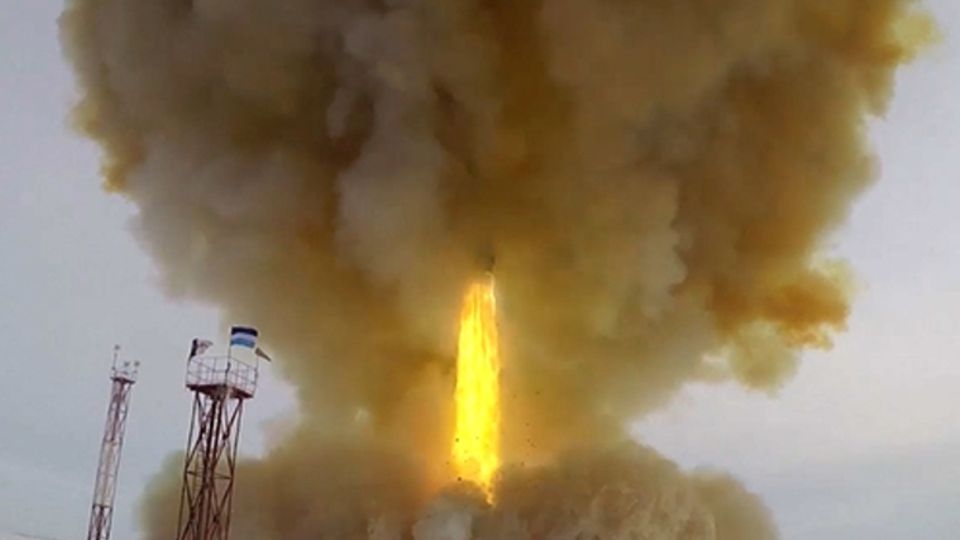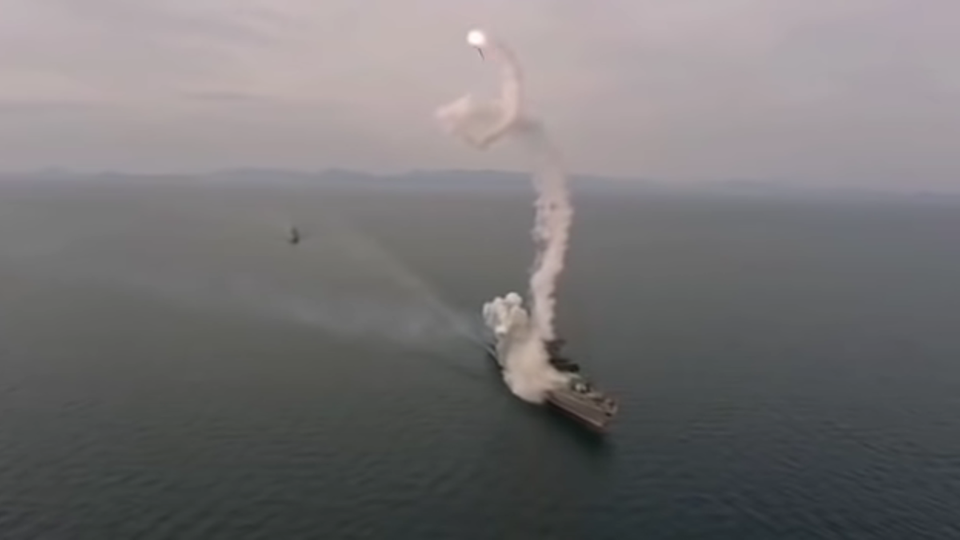war in Ukraine
Kh-47 Kinzhal – that’s why Ukraine was able to shoot down one of Putin’s “invincible” hypersonic missiles
The Mig-31K is equipped with only one Kh-47M2 Kinschal.
© Youtube Russian Air Force / PR
In 2018, Putin boasted that nobody could intercept his Kinzhal air-launched missile. Now it has happened after all, because Putin concealed the weak point of the system during the presentation.
On May 4, Russia attacked Kiev with a Kh-47 Kinzhal hypersonic weapon and managed to intercept a missile of this type for the first time. Photos of debris from the weapon surfaced shortly thereafter, but the Ukrainian military only confirmed the shooting down over the weekend. Air Force Commander Mykola Oleshchuk told Telegram: “Yes, we shot down the ‘unique’ Kinzhal. It happened during the night attack on May 4 in the sky over the Kiev region.” The missile was launched from a MiG-31K aircraft over Russian territory and was then hit with a Patriot missile.
Big words from Putin
In 2018, Putin announced this weapon (The Russian bear shows its claws – what’s the deal with Putin’s miracle weapons?). “This missile, flying at hypersonic speed, ten times faster than the speed of sound, can maneuver at all stages of its trajectory. This also allows it to overcome all existing and, in my opinion, future anti-aircraft and missile defense systems and nuclear and conventional warheads at a range of more than 2000 kilometers.”
In fact, Putin exaggerated a bit. The Kinshah missile is only half a hypersonic weapon. It achieves the necessary speed, more than five times the speed of sound, but only has very limited manoeuvrability. This isn’t hair-splitting either. The high speed alone does not make the new weapon type. The warheads of the older ballistic missiles reach high velocities as they fall back down from their orbit. Really new models are the Avangard gliders, which are highly manoeuvrable despite their enormous speed (Avangard gliders – Putin’s “absolute weapon” goes into service). The Patriot’s inability to dodge will have led to the Kinshah being shot down
half the truth
This is also not surprising. The Kinzhal is essentially a modified Iskander missile that is no longer ground-launched but air-launched. And that’s no small thing, because the area of application is expanding enormously. The range of the rocket is added to that of the carrier aircraft. How far and how fast the rocket can really fly is not publicly known. Compared to the ground variant, it benefits from high altitude take-off and high speed. It therefore does not have to use any of its own energy to climb and gain speed at all; the carrier aircraft takes over this task. Western experts, however, assume that Putin’s statements from 2018 are exaggerated. Also, because of the rocket’s size, only a few types can launch it, mostly a Mig-31 fighter plane. The Mig-31 was designed as a heavy interceptor and, with a top speed of 2.8 times the speed of sound, is one of the fastest combat aircraft in the world.
The Kinschal, like the Iskander, moves on a modified ballistic trajectory, it does not follow a pure curve but can make slight deviations, so its course is not so easily predicted. But she can’t make any curves or hooks. Shortly before the destination, the deviations from the track are irrelevant. So the Kinschal can also be shot down under favorable conditions. For example, when it approaches the defense battery and loses speed at the moment of the final approach. That may have been the case in Kiev. Although the shooting down certainly came as a shock to Putin’s military, the danger is far from over since the Patriots cannot protect all targets in Ukraine.
Ballistic missiles harder to intercept
These missiles can carry a 500-kilogram warhead and can even be nuclear-tipped. Unlike the cheap Iranian-made drones, it is a complex and expensive missile that cannot be used in large quantities. With its precision, it remains a dangerous weapon that is far more difficult to intercept than the slow and low-flying drones or cruise missiles.
In principle, it would also be conceivable that the warring parties could try to develop and use cheap ballistic missiles, for example based on the cluster rocket concept. So far this has not happened.
Also read:
The Russian bear shows its claws – what’s up with Putin’s miracle weapons?
Avangard glider – Putin’s “absolute weapon” goes into service
Putin unveils the deadliest nuclear weapon since the end of the Cold War




